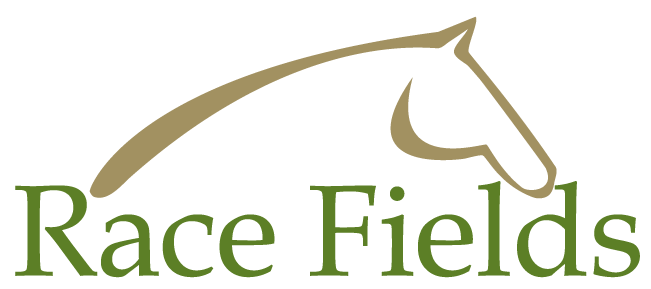TIPS ON BUYING A HORSE
When buying a horse the first question you need to ask yourself is: How much am I willing to spend? Once a budget has been decided upon it’s time to think about “What type of horse do I want to buy? There are a few categories to choose from:
Yearlings –the horse is a 1 year old approaching 2 on the horse’s birthday (1 August). Once the yearling is mature enough it will be sent to be broken-in, pre-trained and start its racing career. When choosing a yearling you need to decide what type of race you want to aim for short term returns from lucrative 2YO races (Golden Slipper) or show patience and be rewarded with the classic 3YO races (Guineas, Derbies and Cups) conformation and breeding play a big part in what distances a horse is suited too.
Weanling –horse has been weaned from its mother, normally between 6 to 11 months old. People generally buy weanlings to pinhook which means buying as a weanling and preparing the horse to sell as a yearling.
Broodmares –mares 4YO and older that have finished their racing careers and are sent to the breeding barn to start producing foals.
Stallions –are referred to as a Horse which has finished his racing career and has been sent to stud.
Tried Horses – are horses that have raced and are being sold as a racing prospect.
Unraced Horses – horses that are broken-in and have not had a race start. Note: some horses could have barrier trialed or participated in a jumpout.
Ready to Run 2/3YOs – horses that have been to pre-training and are ready to race.
Horses for Lease – the horse is retained by the owner and a lease agreement is put in place for an agreed period. Once the lease is expired you do not have any financial stake in that horse.
Syndication – you buy a share in a racehorse that a licensed syndicator has hand-picked from the yearling sales. All the hard work has been done for you.
To find out more about syndications click here
Off the track horses – horses that have finished their racing career and ready to start a new career in equestrian sports.
Race Fillies – fillies that are under the age of 4 that are currently racing.
Unbroken – horses that have not had someone on their back.
When searching for a horse for sale on Bloodstock.com.au you will find each listing showing a pedigree page. To find out how to read a pedigree view the diagram below:
1. Year of birth of dam
2. A synopsis of the sire's racing record and progeny
3. Mother of catalogued horse
4. Winner
5. A synopsis of the racing record of each of the dam's offspring
6. Colour and sex of horse
7. Stakes winner
8. Mare's producing record
9. Name of race the horse has won
10. Grand dam of catalogued horse
11. Prizemoney earned
12. Third dam of catalogued horse
13. A synopsis of first dam's racing record
14. Stakes placed horse
15. Four generation tabulation
16. Brands and foaling date of horse
17. The name of the stud, or individual selling the horse
The number and row of the stable where the horse is located

1. A big strong horse – it shows the horse’s maturity and strength.
2. Good moving horse that walks straight through. Tip: watch the hind legs tracking and try to notice if the horse is well balanced when walking
3. Well balanced horse is a nicely conformed magnificent type. The horse will have a deep girth, strong hindquarter, good bone, perfect feet, an intelligent head and an alert eye
4. Good girth – the horse should be balanced in length from the wither to the hip to the tail dock. A good deep girth give more room for the organs and larger lung capacity.
5. Large jowl – the bigger the better. This coincides with a deep girth giving a better air intake to the throat and lungs
6. Strong Hindquarters – the hindquarters are the engine which drives the horse. The stronger the hindquarters the more power.
7. Strong knees – look for correct and flat knees with a centre line running through the canon, fetlock and hoof. Average knees are offset, apples knees which is when the lower part of the knee is rounded or fleshly. Offset knees can be okay provided the tendon behind the knee is vertical to the fetlock joint at the rear. Bad knees are very open and have a weak structure.
8. Good feet (not boxed) - perfect feet are strong, wide feet that have great shape, are not too flat and have a good toe. A good toe is nicely rounded at the base and the sole of the hoof has a good width. "Tunnel or box feet have a narrow slope, no hoof development and have not matured in proportion to the horse’s growth. Box feet (tunnel feet) are a problem because they create shoeing complications due to not enough wall on the hoof.
9. Hocks – need to be in proportion, they should be parallel to the horses knees.
10. Good size nostrils – this helps with breathing
11. Size doesn't matter too much if the individual horse has all the other points.
12. Good temperament – this is most important of all. A loose walking horse has a relaxed gait and nice follow through. This shows that the horse’s temperament is relaxed.

For more information or help with buying a horse please contact our Bloodstock team on 1300 711 683 or info@bloodstock.com.au
 InglisDigitalAUS
InglisDigitalAUS InglisDigitalUSA
InglisDigitalUSA







